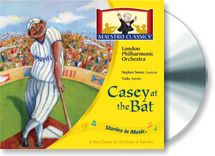 We have recently had the opportunity to review a book from Apologia Educational Ministries' Christian worldview curriculum series, What We Believe. The intended age range for these books is 1st-6th grade.We received the following items to review:
We have recently had the opportunity to review a book from Apologia Educational Ministries' Christian worldview curriculum series, What We Believe. The intended age range for these books is 1st-6th grade.We received the following items to review:- What On Earth Can I Do? Hardcover Text ($39)
- What On Earth Can I Do? Notebooking Journal ($24)
- What On Earth Can I Do? Junior Notebooking Journal ($24)
- What On Earth Can I Do? Coloring Book ($8)
My girls are 13 and 14, and were fine with the length of the lessons. My son, who is 6 and a half, had a hard time with the longer readings. He started out listening, but it worked out best to let him play with Legos or blocks while we read the lessons aloud. Honestly, for something I'd like to use as a morning time activity, the readings are too long.
The notebooking journals add a lot to this program. The reading schedule is in the front of both the Junior Notebooking Journal and the regular Notebooking Journal, so you know which pages to read in the text and which notebook pages correspond to the reading. I think it would be a key component for a student reading the text independently. And, although my son was not terribly interested in listening intently to the readings, when he and I worked on the activities in the junior journal, we were able to talk about the lessons, and I could tell that he picked up on more than I thought he would. He might not have been quite ready for all the things in the junior journal, but he enjoyed working in it - even when he did his copywork in crayon. He can do word searches with help, too. We had a good time.
What we liked:
- The parables are rewritten in an engaging style with cultural information that explains a lot about the stories.
- We enjoyed reading stories about people like Winston Churchill, Corrie ten Boom and Charlie Chapline, and historical places and artifacts like St. Paul's Cathedral and the Apocalypse Tapestry
- There are of images of beautiful, historical artwork.
- All the stories and biographies relate to World War II, and it was interesting to watch that unfold as we went through the lessons. They worked well to illustrate the ideas of time, talents and tithes, or stewardship, which is the goal of the book.

- Bible verses were presented in versions that best presented the concept in the text. That is a pet peeve of mine. Apologia is certainly not the only publisher to do this, and I've even seen it done in sermons in church, but I don't like it.
- The lessons are long for younger children to sit through. They were longer than I'd prefer for a family devotional. The readings range from three to fourteen pages, and the pages are large, textbook-sized pages. Three was good; fourteen, not so much. You could certainly read less in one sitting; one of the benefits of homeschooling is having a flexible schedule.
Click to read more reviews from the Schoolhouse Crew!































